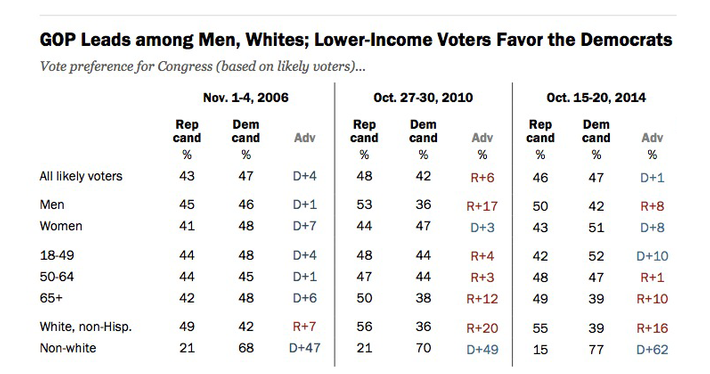
The Pew Research Survey, which is the gold standard of political polling owing to its large sample sizes and careful methodology, has a new survey of the midterm electorate. The headline result shows 47 percent of likely voters planning to vote for the Democratic candidate in their district, against 46 percent planning to vote Republican, which is too small a margin to overcome the Republican tilt of the House map. But the most fascinating result is the continued long-term polarization of the electorate by race.
In 2006, Republicans led among white voters by 7 points, while Democrats led among nonwhites by 47. This year, the Republican lead among whites has expanded to 16 points. That’s what you’d expect, of course, comparing a slightly pro-Republican election year to the huge Democratic wave election eight years ago.
But here is the surprising thing. Nonwhite voters this year favor Democrats by 62 points. The Democrats’ lead among those voters has actually grown, even as their over-standing has deteriorated.

The midterm map will mute Democrats’ huge popularity among nonwhite voters. In the House, Democrats are packed into urban districts where their votes are wasted, letting Republicans easily control a majority without needing a majority of overall votes. The Senate, by its nature, gives more representation to Americans in small states, who are more white and rural than America as a whole, and this year’s races are concentrated in mostly non-Latino states.
But the long-term trend is that Democrats continue to gain strength among nonwhite voters even as nonwhite voters steadily increase their share of the electorate. That is a trend Republicans are going to have to stop.






























